Home > Highlighting JAPAN > Highlighting Japan OCTOBER 2012 > The Capital's New Symbol: Tokyo Skytree
Highlighting JAPAN
COVER STORY: TOKYO: NEW PERSPECTIVES
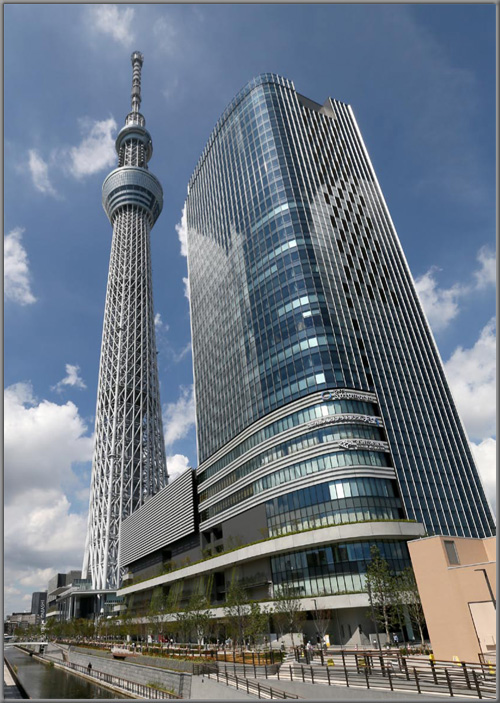
Caption: A cross-section of the body of Tokyo Skytree above ground is a planar shape, an equilateral triangle with each side measuring around 68 meters. However, this cross-section gradually changes into a circle as the tower rises. As a result, Skytree could appear as if it is convex or concave depending on the angle from which it is viewed. The design of these gentle curves is referred to as "sori" (concave) and the convex design as "mukuri," these concepts being incorporated in traditional Japanese crafts and architecture.
Credit: YUICHI ITABASHI
The Capital's New Symbol: Tokyo Skytree
Tokyo Tower, which has been popular among those from Japan and abroad as a symbol of Tokyo ever since it opened in 1958, looms above the heart of Tokyo. And then came Tokyo Skytree, which opened in May of this year in the downtown area of the eastern side of Tokyo. Tokyo Skytree, which is 634 meters high, stands proud as the highest free-standing broadcasting tower in the world. The tower could be considered a new symbol, which was constructed on the strength of technology and tradition cultivated over many years.
[INTERVIEW]"Floating" the Skytree
Hirohito Totsune is a lighting designer who was in charge of lighting Tokyo Skytree. The Japan Journal's Osamu Sawaji spoke with Totsune.
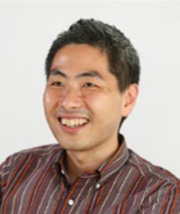
Credit: YUICHI ITABASHI
What was your inspiration for Tokyo Skytree's lighting design?
Hirohito Totsune: It was based on an image of Mount Fuji in the night sky. By lighting up Tokyo Skytree, I thought that it would be a presence similar to that of Mount Fuji during the day. Ever since the Edo period (1603–1867), people of Edo (former name for Tokyo) have loved Mount Fuji, which is also frequently depicted in ukiyo-e woodblock prints. Nowadays, it is more difficult to see Mount Fuji in daily life because there are a lot of buildings. When Mount Fuji comes into view, any person feels fortunate and happy. The top portion of Skytree is lit with white lights based on an image of snow on Mount Fuji. And by casting a light on the main body of Skytree from the top, it appears as if the tower is floating above the earth.
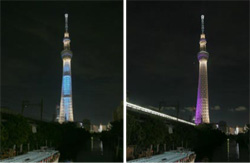
Credit: YUICHI ITABASHI
Tokyo Skytree is illuminated on alternating days, based I hear on the themes of iki (the spirit of Edo) and miyabi (the aesthetics of Edo).
When I was working on the lighting design, in terms of words that express Edo, the words "iki," which conveys Edo's forthright spirit, and "miyabi," which signifies Edo's delicate aesthetics, came to mind. I didn't think it was possible to express Edo by using just one of these words, so we planned the lighting show on these themes on alternating days.
Iki is lit in blue, which is based on things like the colors of happi coats worn to festivals and the image of the Sumida-gawa river waterfront. In its Iki light-up phase, a blue light is cast on the shinbashira center column (see below). Miyabi lights up the steel frames on the tower's exterior in Edo purple, which is used in Japanese female attire and kabuki costumes.
Could you elaborate on your thoughts and give us specifics on what it means to have an identity connected to Edo or Tokyo?
In mulling over the lighting for Skytree, I read books and saw pictures on Edo, and they depicted the people of Edo being full of life and happiness. Compared with Kyoto and Osaka in western Japan, Edo was a new city created by a multitude of people who gathered from other regions. The people of Edo created various types of culture by competing with each other or by developing a sense of rivalry with Kyoto or Osaka. Edo had power and speed, but they did not make the city appear unrefined. In fact, Edo was a fashionable town.
LED was not widely used yet back in 2007 when the lighting design was decided. Please tell us the reason behind using LED for Skytree's lighting.
Compared with conventional lighting, it is possible to create extremely beautiful and subtle colors with LED lighting. And in fact, the amount of electricity consumption is 40% lower than conventional lighting.
Using flashing lights and making it appear as if the tower were rotating on the surface of the observation deck, or slowly lighting up the tower from top to bottom over a 20-second period was only possible because LED was used. LED lighting is also used to create a shooting star once every 30 minutes.
100 Views of Tokyo Skytree
The joy of Tokyo Skytree is not only as a vantage point from which to view Tokyo, but also as a landmark to be viewed from temples, rivers and parks in surrounding areas. Here, we will introduce a number of locations in the downtown area where the masses lived during the Edo period (1603–1867) and where Tokyo Skytree can be seen.

Credit: YUICHI ITABASHI
The town that ran along the Sumida-gawa river suffered great damage from the Great Kanto Earthquake in 1923. Sumida Park was subsequently completed in 1931 as part of a restoration project, and aims to serve as a green area used for disaster prevention and a place of refuge at times of disaster. Sumida Park houses a Japanese garden, a fishing pond and a 1-kilometer avenue of cherry trees that run along the river, an area that bustles with people viewing blossoms in the spring.
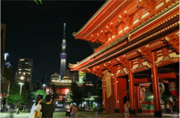
Credit: YUICHI ITABASHI
Senso-ji is said to have been built in the year 628. It is the oldest temple in Tokyo and attracts around 30 million visitors a year. Senso-ji started to develop ever since a shogun embraced the shrine during the Kamakura period (1185–1333) and thus attracting notable military commanders as devotees. A gate named Kaminarimon stands at the entryway to Senso-ji, and inside the grounds is the Nakamise area lined by souvenir and sweets shops.
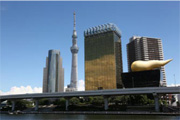
Credit: YUICHI ITABASHI
A wooden bridge, called Okawabashi, was constructed in 1774 over the area where Azumabashi stands today. The bridge was rebuilt in 1876 and was renamed Azumabashi. Subsequently, the bridge was rebuilt several times, with the bridge that is seen today constructed in 1931. Azumabashi offers sweeping views of Tokyo Skytree, along with the Sumida Ward office, the amber-colored glass building Asahi Beer Tower and the Asahi Super Dry Hall, which is topped with a huge golden objet d'art.

Credit: YUICHI ITABASHI
Ushijima-jinja is a shrine that is said to have been built in the ninth century. A festival, held on a weekend in mid-September every year, attracts a crowd, with a portable shrine paraded through town and numerous food and drink stalls lining the streets. Ushijima-jinja enshrines the ujigami (local deity) of Tokyo Skytree. The ushi in Ushijima-jinja refers to the cow, and the shrine has worshipped the cow since the olden days. In the shrine, there is a bronze statue of a cow called nadeushi, which was dedicated in 1825. By rubbing an ailing part of one's body and then rubbing the same body part of the cow, that body part is said to heal.
Protecting Tokyo Skytree
Cutting-edge technology is the foundation for safety for Tokyo Skytree, which is located in Tokyo where natural disasters like earthquakes and torrential rain are frequent. The most important piece of technology is the Shinbashira-seishin (Center Column Vibration Control), which is the world's first vibration suppressing system. "Shinbashira" is a term originally used to refer to the central pillar in five-story pagodas found in traditional Japanese architecture. The shinbashira, which is a 375-meter concrete pillar that runs right through the center of Tokyo Skytree, is connected to the main body of Skytree by an expanding and contracting oil damper. As the timing of the swaying of the main body and shinbashira caused by earthquakes and wind would not coincide with each other, the mechanism is such that the swaying of both structures would cancel each other out. Also, the wall-shaped piles that have been driven 50 meters into the ground at the foot of Skytree attach to knuckle walls, which are protuberances that ensure that the piles are securely anchored in the solid foundation. Such technology prevents Skytree from toppling, even if it is hit by an earthquake that measures magnitude 7.9, which is the same strength as the Great Kanto Earthquake in 1923, or if there is a storm with wind velocity that measures as fast as 83 meters per second.
Skytree also has a role of being the disaster prevention center in the region. There are four water thermal energy storage tanks that store about 7,000 tons of water located about 20 meters below the site of Skytree. This water is normally used for air-conditioning facilities, including Skytree's own, but at times of major disaster, the water will be provided to the region for daily living and fire-extinguishing. A total of 7,000 tons of water equals the amount of water used by about 230,000 people in one day.
Aside from the water thermal energy storage tanks, there are about sixty rainwater holding tanks (total volume about 2,600 tons) in the basement. Water used for toilets and plants within the facility accounts for around 800 tons of the total, while the remaining 1,800 tons are used to store water, adjust water levels that flow in the surrounding areas and prevent flooding during a localized torrential downpour.
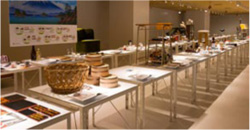 A special exhibition on Tokyo, "d design travel TOKYO-47," is being held at d47 MUSEUM from September 1 through October 28. Representative features of the capital are exhibited in six categories: sights, restaurants, shops, cafés, hotels and people. Credit: MASATOSHI SAKAMOTO The d47 MUSEUM located in the commercial complex Shibuya Hikarie in Shibuya, is an art museum that opened in April of this year. The museum is a place where the old and young, men and women can casually visit day after day as it is in a great location that connects directly to a station and is situated in a district that is a source of youth culture. The "d" in d47 MUSEUM stands for design, and "47" stands for the number of prefectures in Japan. Here, a theme is set for each exhibition, which introduces designs and crafts that are representative of the themed area. The unique features of each Japanese region, which have been shaped by their respective cultures over a long period of time, are surprisingly multi-faceted. The museum has a display of items that have been collected from each prefecture and are placed individually on forty-seven tables that measure 90 cm by 90 cm. While still in Tokyo, it is possible to witness a broad view of Japan's diversity by visiting this art museum. The themes selected for exhibitions to date have been on travel, domestic craft beers and accessories. Themes that are being considered are varied, from the Good Design Award and supermarkets to outdoor sports. In addition to exhibitions, there is a plan to hold special exhibitions on a specific prefecture two or three times a year. The art museum also contains the d47 design travel store, where some of the displayed items can be purchased, and the d47 cafeteria, where set meals using seasonal ingredients from all over Japan are offered. It might be possible to find an interesting prefecture by learning, buying and eating food from the forty-seven prefectures in this area. The d47 MUSEUM is also a place that inspires visitors to go on a trip somewhere new. |
© 2009 Cabinet Office, Government of Japan






